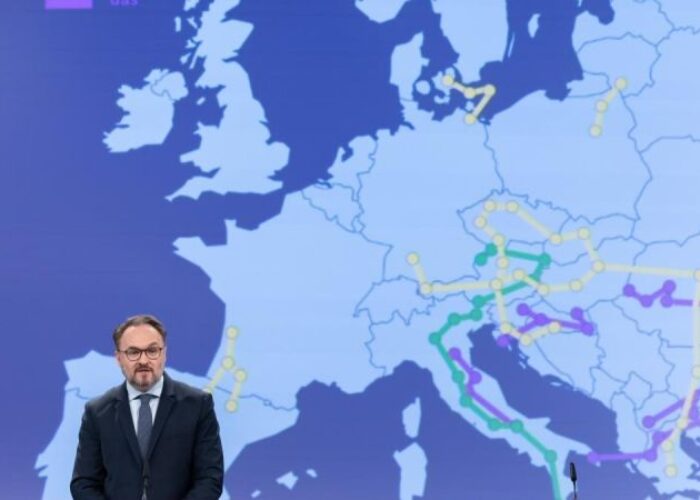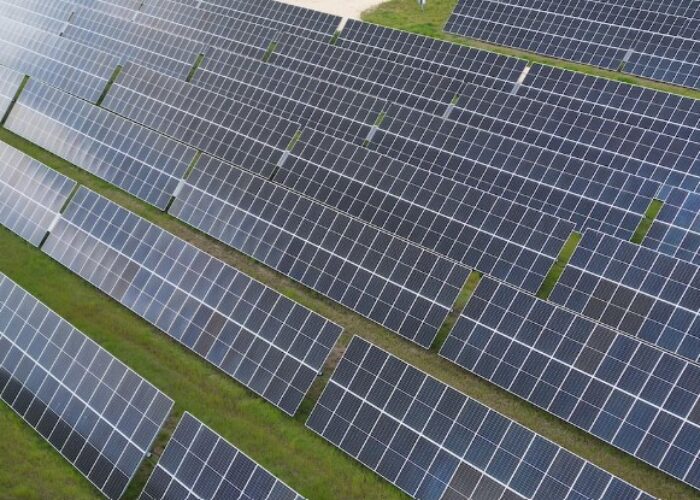
The European solar market finds itself at a critical juncture. While module prices have reached historic lows, developers are grappling with a perfect storm of challenges that threaten project economics across the continent. Low wholesale electricity prices, rising soft costs and increasingly selective investors are forcing a fundamental rethink of how solar projects are structured and financed.
Ksenia Dray, global solar leader at RES Group, will be addressing these challenges at our upcoming PV ModuleTech Europe conference. In an interview with PV Tech ahead of the event, she outlines how the industry is adapting to what she describes as an increasingly complex environment for standalone solar projects.
Try Premium for just $1
- Full premium access for the first month at only $1
- Converts to an annual rate after 30 days unless cancelled
- Cancel anytime during the trial period
Premium Benefits
- Expert industry analysis and interviews
- Digital access to PV Tech Power journal
- Exclusive event discounts
Or get the full Premium subscription right away
Or continue reading this article for free
The shifting project economics landscape
The mathematics of solar project economics has undergone fundamental changes over recent years. Module costs, which once represented 35-40% of total project capex, have fallen to around 20-30% of overall costs. While this might seem positive, Ksenia Dray explains that this shift has actually reduced developers’ ability to influence project economics solely through hardware procurement.
“The workforce today on a project accounts for much more than the main technology that will influence your yield for 35-40 years,” Dray notes. “It’s more about being able to secure contractors for the mechanical, electrical and civil works at competitive prices, rather than focusing solely on module costs.”
This transformation means that even with modules at historic lows – and expectations of potential increases of one to two cents – developers must look elsewhere to optimise project economics. The challenge is compounded by a shortage of contractors and other key personnel across many European markets, driving up labour costs precisely when developers need to reduce overall capex.
Revenue pressures and market realities
The revenue side of the equation presents equally significant challenges. Wholesale electricity prices have declined substantially across Europe, with markets seeing power purchase agreement (PPA) prices drop to €30-35/MWh (US$35-40), such as in the Nordics, and €50 or lower in Germany, Dray says. This creates a structural imbalance between project revenue potential and construction costs, compressing margins and undermining overall project profitability.
“Projects backed by CfDs or robust PPAs offer far greater bankability,” Dray explains. “Assured revenue streams improve debt capacity, stabilise returns and make the financing process much more efficient. Merchant-exposed projects, on the other hand, carry substantial price-volatility risk — particularly in markets experiencing frequent negative prices such as Germany, Spain, or France — which erodes expected revenues and lowers investor appetite.”
Investor expectations have shifted considerably. Today, capital is concentrating on projects that offer higher returns and a strong de-risked profile — meaning permits secured, grid connection confirmed, and limited exposure to price volatility. Standalone solar projects, especially those fully exposed to market prices and increasing negative-price events, often struggle to meet these elevated return requirements.
Strategic responses and cost optimisation
Faced with these constraints, developers are pursuing multiple strategies to maintain project viability. On the cost side, EPC prices have seen some reduction, falling below €390,000 per megawatt in Germany, or around £400,000 (US$523,000) per MW in the UK. However, Dray cautions that these figures generally reflect ‘vanilla’ projects with no site-specific complexities and minimal contingencies. In reality, most projects cannot reach these ultra-low cost levels, and this likely represents the limit of what can be achieved through traditional cost reductions alone.
“There’s a limit to where capex can drop,” she observes. “Projects are complex, and in the UK, for instance, archaeology constraints or drainage requirements can significantly increase costs. In other regions, rocky terrain or challenging ground conditions have a similar impact. These site-specific factors ultimately set a realistic floor on capex, and they must be carefully assessed, because they can materially influence the project’s overall profitability and the attractiveness of the initial investment.”
Alongside managing costs, developers are also looking more broadly at ways to optimise overall project performance. This includes strategic module selection, with some developers exploring back-contact modules to increase yield and capture additional revenue points. The emphasis on yield optimisation becomes critical when revenue per unit of generation is under pressure.
The rise of hybrid solutions

Perhaps the most significant strategic shift has been toward hybrid projects combining solar with battery storage, which are gaining prominence as developers seek ways to enhance project value. However, Dray cautions that hybrid projects aren’t a guaranteed route to higher profitability. “You can uplift a project’s economics by two to three percentage points with a hybrid configuration, but demonstrating that value is complex. The market is still maturing in terms of hybrid design, and credible hybrid revenue models — including hybrid PPAs — are only just emerging. Lenders and investors want to see a clear, proven revenue stack before they are comfortable financing these projects,” she says
The key challenge lies in the regulatory landscape. In many European markets, the rules for valuing storage and defining which grid services it can sell are still unclear. Relying solely on merchant participation in capacity or balancing markets introduces significant risk, and investors generally prefer more stable, predictable revenue streams.
“This uncertainty is why many banks and investors remain cautious,” Dray explains. “Without a clear and established framework for storage revenues, it’s difficult to underwrite long-term returns.”
Market outlook and industry adaptation
The cumulative effect of these challenges is becoming apparent in market dynamics. Solar Power Europe’s growth projections have been revised downward in H1 2025. The market is now expected to slightly contract to -1.4% in 2025 under the ‘medium scenario’, making it the first year of decline in nearly a decade, rather than the initially optimistic 7%. The high scenario now forecasts only a 1.1% growth.
M&A activity in the European renewables sector has slowed sharply, a trend closely tied to tightening project economics and a broader cooling of investor appetite for ‘green’ assets, which are now viewed as carrying higher risk and weaker returns.
Ksenia Dray suggests the industry may need to accept a shift in business models. “It’s not just about electricity prices— it’s the growing revenue volatility,” she says. “Storage can strengthen the revenue stack and improve risk-adjusted returns, whereas standalone solar is finding it increasingly difficult to remain competitive on its own.”
The challenging economics have also driven innovation in how transactions happen. Digital platforms are emerging to streamline M&A processes, reduce transaction costs and connect buyers with sellers more efficiently. One such example is the platform Nrdeal, which not only facilitates investments in renewable energy projects by connecting key actors, but also provides the market intelligence and advisor network needed to evaluate assets in a more complex economic environment. By reducing the administrative burden of transactions and providing better visibility into opportunities, platforms such as Nrdeal accelerate deal cycles in a market where investors are becoming increasingly selective.
Looking forward
The European solar industry stands at a crossroads. While the fundamental drivers for renewable energy deployment remain strong, the economic realities require a more sophisticated approach to project development and financing. Success increasingly depends on optimising every aspect of project economics – from innovative financing structures to strategic technology choices and revenue diversification through storage integration.
The challenge for developers is navigating this complexity while maintaining the scale of deployment needed to meet Europe’s 2030 renewable energy targets. As Ksenia Dray suggests, this will require continued innovation in project design, financing mechanisms and market structures to bridge the gap between current economics and deployment ambitions.
Ksenia Dray will participate in a panel discussion on solar project economics at PVModuleTech Europe in Málaga, Spain, on 2-3 December. For full details and booking, click here.






